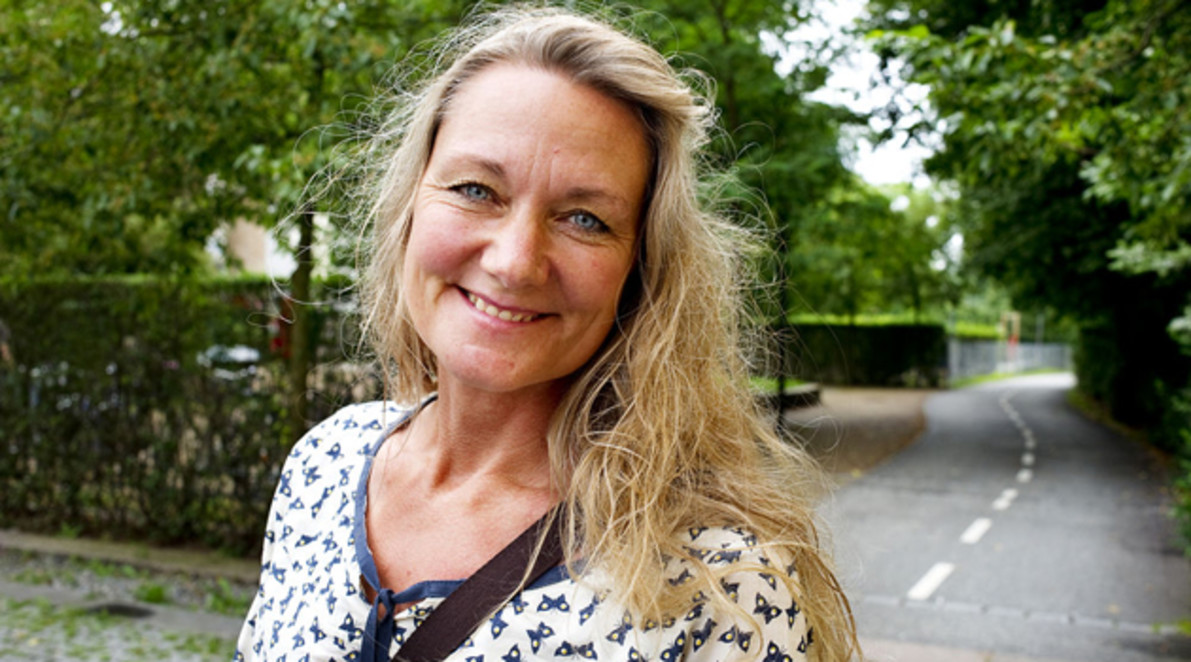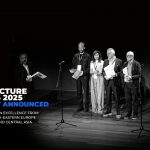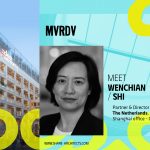Tina Saaby, former city architect Copenhagen: 12 Stories about the future of urban living
This past weeks we had the honour to learn the principles of a liveable city from a distinguished architect who stands at the roots of the development of a major European city, Copenhagen. arch. Tina Saaby has more than 10 years experience as the city planner of Copenhagen, and currently of the city of Gladsaxe, Denmark. The role of the City Architect is a professional management role, which requires an ability to navigate in stormy weather, requires one to be clear in one’s argumentation, and requires an ability to quickly create overview and prioritise what is important.
During SHARE Krakow 2020, she has exposed her views, challenges, and concerns about the state of urban living and how architecture needs to be accounted for. Opening her lecture with a focus on the three big challenges in creating viable cities that follow “precautions, distances, senses, hormones, feelings”, arch. Tina Saaby has transformed her documentation on urban living into a series of 12 small stories – tips, challenges, solutions for young city planners – that contour how the city of Copenhagen had evolved throughout the years. Through her immersive “story-telling”, she has stratified the fundamental threats and interests and brought forward the main idea that we have to look at diversity and we have to change our behaviour both in small scale and in big scale if we want to get to a future of a new diverse urban living.
Tina Saaby: It is a pleasure to be in Krakow even though I’m sitting in my own room at home. I’ve been looking forward to this session and I have enjoyed especially the session before this one. I will talk about the future of urban living and I will do that in a broad sense. Now, let’s see if I can change the slide myself.
My experience as an architect comes both from practice and from public servants. The introduction said that I’ve been working as the city architect both in Copenhagen and now in Gladsaxe, but before that, I had my own office, so I have been designing buildings at urban spaces before going into public service which means that I also have some knowledge about how to build and how to make contracts and the design process in general.
Then I’ve been having a lot of international corporations both as a teacher but also as a member. I also have some of my experience of talking with people all around the world. The future of urban living. I will begin a little bit talking about urban living because urban living is for me a lot to do with living together. We can’t talk about cities and we can’t talk about city development without having the knowledge of being together as human beings.
Andreas was talking in the last session about how today more people live in urban areas than people living in rural areas. There is a whole new tendency all around the world that more and more people will go together and live together in the cities. That’s why we have to talk so much about what it means to live together. To live together is about humanity, it’s about feelings, it is about how we interact, how we as humans eat and breathe and smell and touch, how we live our lives, how we want to feel safe, how we spend our time, how we dream, and how we engage in our city and in our neighbourhoods.
If we have to talk about that, we also have to talk about when we talk about architecture and urban development, it is about precautions, distances, senses, hormones, feelings. It has a lot to do with how the scale of the city is, the scale of the street. If the park is too big, the street is too big, you can’t have eye contact with the people on the other side, if the buildings are too tall, we can’t have daylight at the ground floor.
If we don’t have daylight at the ground floors, people sense the urban space is cold and then they don’t want to get outside. We have to know so much about us as human beings to understand how we can design our cities and our buildings and our urban spaces so that we can live together. Jan Gehl, a Danish architect known around the world talks about this sensual and human perspective and he talks about the human as animals and how we as humans also sense the world.
He talks about how we walk at five kilometres per hour, how we’re built to do that when we were designed as humans in the beginning. He talks about how it is important to understand this slow-motion actually to be better at understanding the cities as well. It’s not news that we need to feel the city, that we need to feel the humans, the other ones on the other side of the street, or the one that we’re living together with, the people that we’re working together with.
It’s on a small scale that we have to talk about that also. In Copenhagen, we designed a strategic paper in 2015. In this paper which is a political paper that tries to put in front what is important no matter what you’re doing in designing the city. We say that in Copenhagen we think of urban life before designing the urban space and that we talk about the urban space before we talk about the design of the buildings.
We don’t talk about the building itself without having had the discussion about what kind of city life we want in front of the building and then we can start to discuss how tall should the building then be, how broad should the street be, and how transparent should the building be as well. This strategic paper is also a strategic paper that tried to put three indicators to the kind of city we want and say that we want to have a livable responsible city with an edge.
When we go into that paper and try to look at the words that are in it, a lot of it has to do with togetherness and how we again as humans interact, and naturally we must play to our strengths, and by 2025 we want to see Copenhagen as a vibrant city that acts as global leaders. We want to have a more dynamic city with an edge that better reflects the diversity of its population and allows for individual differences.
Looking at the diversity and individual differences is not something that was important in the last century. In the modern world, this is Le Corbusier dreaming about the city of the last century and you can say that there was something that was good in this modernity and in this modern development of society. The good thing was that more people had access to daylight, to public space, to open space, to nature, they have a bigger apartment, they all got showers and baths in the apartment.
It was not only a bad society that was designed at this time, but there was something also that was bad about it. It was that we designed the ideal cities and ideal neighbourhoods. We tried to design the ideal apartment with the ideal family mom and dad and two kids. We designed and researched on how we could design the ideal kitchen for the ideal woman that made the ideal food but today we understand that there is no ideal family. There is no ideal neighbourhood or an ideal apartment. We know today that people are diverse.
Today we talk about the fact that there are more than 30 different kinds of families and, of course, to embrace that diversity we should be able to try to look totally different on the way that we design and plan our cities. This was a sentence from our strategic paper that we want a more dynamic city with an edge that better reflects the diversity of its population and allows for the individual differences.
It means that we have to change behaviour as, as architects, as clients, as builders, as designing products, and as humans. We have to ask for diversity in our organizations when we engage the citizens, stakeholders when we hire people, and when we plan conferences, seminars, and when we teach our students, we have to be more aware of how we can actually reflect the diversity of our population.
That was a little about urban living and the mixed and diverse cities that we have to go for in the future. The challenge of the cities today is if we have to go away from thinking that we can control and plan an ideal plan. If we go into that world, the complexity is way bigger than it was in the last century. That is a big challenge if we have to embrace that complexity in society today.
Another big challenge is that we have climate change that we had never seen as big as it is today. When I started as the city architect in Copenhagen in 2010, we talked about overheating. We talked about the cloud burst. We talked about the rising sea level, but we have not felt anything of it. Not anything of it, we were only talking about it. Then in 2011, we had a cloud burst in Copenhagen that was the biggest one ever.
In 2013, we had the rising sea almost going into all the apartments in our new neighbourhood. In 2017, we had the hottest weather ever. The whole land map of Copenhagen went from green to brown when we’re looking from above. Today, and it’s only 10 years, it is not something we talk about any longer. It is something that every one of us feels in our everyday life and we have to embrace that as well in the future of our urban living.
The future of urban living. 12 Stories about…
Now I will tell you 12 small stories about what we did in Copenhagen and what we tried to do to make it better, and also something where we may just succeed a little bit. Of course, we still have a lot to do and a lot to learn.
….citylife
The first story is about city life. One of the strategic goals in the paper I showed you before is saying that we want the Copenhageners to stay 20% more outside in the city in 2025.
It’s a way of pushing people to stay outside a lot longer and, therefore, to be a part of city life. As a part of that, we are very precise on the ground floors in the city. We regulate how the ground floor should meet the urban space so that people have easy access to go outside. Both in our housing areas but also in our retail, in our office areas, in our shopping street, in every place in the city. The edge zone, the ground floor meeting the urban space is very important and therefore regulated.
…temporarity
The second story is about dealing with temporarily, trying to experiment and learn how we can change the city very easily. This is a small urban space that was there for three years. It is now a culture that we do temporary experiments as a part of doing urban development. It is both talking about urban space but it is also to experiment with temporarily talking about buildings.
…co-creation
The third story is to try to be aware of co-creation, that we have to engage and involve people in the design of the city. This is kids that are a part of the building process by the end of the playground that they were part of in the city. Energy is something that is important, especially talking about climate change, but also when we talk about the complexity.
…energy
In our climate plan, we say that we want to be CO2 neutral in Copenhagen by 2025, talking about energy consumption and production. As a part of that, our energy production is a central system. This is seen from the urban space in front of our queen’s castle where she can look at the new building with the biggest design and where we have a ski hill on top of it. It’s not something that is invisible from the city.
…no waste of resources
The fifth story is no waste of resources. One of the targets is, of course, to be CO2 neutral, but also that we need to be aware of how we can use our resources in a better way. One small example is this urban space where all the materials we upcycle it from other places in the city. We have a storage place for all the materials that we take down in the city. We put it into storage, and then we use it for the next design of the next urban space. Around 80% of this urban space is upcycled materials.
…cycling cities
Story six is a cycling city. It is a strategic paper that was designed in 2010 trying to get the people to bike more. Of course, there are a lot of strategic issues in that. One of the things is that we want to make shortcuts for bicycles and pedestrians which means that we make it faster to go by bike and to go on foot. Not that we don’t want to have a car. We do, of course, but by making it faster and easier to walk and to cycle, then people should be stupid if they take the car.
In that way, we design the shortcuts as a part of it. This is one of the bridges over the harbour in the city.
…affordable housing
Seven is about affordable housing. We can’t talk about cities, the urban living without talking about housing and access to affordable housing. In Denmark, we have nonprofit housing organizations around 20% of that is affordable. There is a tenant democracy, and there is a limit on how much they can rent the housing for.
In Copenhagen, we also have 20%, and when we do design the new buildings and the new neighbourhoods, it’s also with affordable housing in it. When we have affordable housing, we talk a lot about the community and how we can embrace people also to talk together. This is a new building where three apartments have this sharing living room that they share together with three different families.
…placemaking
The story eight is about placemaking. This is one of the new neighbourhoods, it’s Northern Harbor. What we try to do when we talk about the new development is to focus on the story. You can see the tall buildings are not the new ones, the old ones that are transformed. It’s the old silos. Then the rest of the new buildings are five to six floors which is the Copenhagen scale because when you have the Copenhagen scale on six-floor, you can still have eye contact with people in the city
…neighborhood improvement
The only reason for the tall building here is that it is a transformation of the old silos. Then the transformation makes the neighborhood unique because it is a part of the understanding of the site, what it was before it was transformed into a new neighborhood. Neighborhood improvement is when we talk about the existing city. It’s a program half paid by the state and half paid by the city which goes on the local side and try to improve the neighborhood.
It is limited for five years. It is funding that goes into developing the urban space. It is on-site development, which means that my colleagues go to have an office on-site, and not from a central office. They go and become a part of the neighborhood. All the decisions are taken together with the local stakeholders. It is a cooperation between people with knowledge, political power, and the citizen, the local neighborhood.
Together on this board, they make decisions about how to transform the urban space and the neighborhood in general.
…harbour as neighbourhood connector
The tenth story is about the harbour. Of course, not every city has harbors, but all cities have barriers. I think one of my learnings from Copenhagen and also now from Gladsaxe where there are a lot of barriers, in Gladsaxe it is the barriers are more highways and not the harbours.
Still, it’s in a way the same problem that they go as barriers, and split the city into– In the old days Copenhagen harbor was split in the old part of the city together with the new part of the city. The Harbor was in a way, the divider of the neighborhoods. What was interesting when we started to develop the harbor was to go from looking at the harbor as a divider to look at the harbor as a neighborhood connector. That totally transformed the harbor as it was.
Of course, it was a long, long development that started to take all the pollution away from the harbor, to rebuild all the pipes so that they didn’t put all the shit into the harbor but they took the shit into different places and cleaned it, instead of just putting it into the water. It’s not easy to get barriers transformed into connectors, but I think that is also a way that we have to talk about the big highways, how can we actually change them and transform them going from being dividers into connectors.
…urban nature
The eleventh story is about urban nature. I think that is a global tendency that every human smile when we talk about trees, flowers, and vegetables, and growing our own garden. It’s not only something that we do in Copenhagen, but it’s all around the world we talk about that and it’s because as I said in the beginning when we talk about humans, we have to understand what is going on in our brains, what is going on with the distances, how do we sense the world.
One of the interesting things about urban nature is that when we start to dig our fingers into the ground, the earth, then we start to release endorphins. When we are outside and the sun comes into our brain, we start to release endorphins. Endorphins is the thing when we release that we start to be happy. We have to know a lot more about understanding the brain and our sensing the world to actually start to get a city that can embrace diversity and embrace human beings into a good urban living.
In Copenhagen, you can see that we have a lot of different strategic papers. It’s in Danish but it is about how to create more urban nature in Copenhagen. It is a tree policy. It is about the cloud burst, that the cloudburst has to give something back to the urban space, and it is about how to get more flowers and in the city. This project is one of our new schoolyards, and the schoolyard is generally open to the city so that the kids can learn to be a citizen, and they can learn to take responsibility for understanding the city.
They have to understand that they are not allowed to go on the road because that is dangerous. All our schoolyard is open to the public, and it also means that the public have access to schoolyards and they interact, and they have eye contact, and they see each other. This example is an example of the schoolyard going from the asphalt as it was before to be a forest. That now the play would be within the trees, instead of the trees only being in the forest outside the city.
…how to take care of heavy rains
The last story is about how to take care of the heavy rains. As I said in the beginning, we had this terrible rain back in 2011. It meant that the political request started really to say to the administration we need to deal with this problem. Already in 2012, we had a whole new plan for how to take care of the water and the whole vision was that it should go from rational pipes underneath the ground into the more irrational understanding of the water.
Giving something back to humans. Giving something back to society. Giving something back to urban space, and letting the water be something that we could also see and understand, and be aware of that we had a responsibility yourself. It meant that we did a mapping of the whole of Copenhagen trying to understand the flow of the raindrops. Where did they go when they touched the ground and went into the sea?
By this understanding and this mapping of all the raindrops in the city, we developed 300 projects that should take care of the water in the whole city. This project was finished in 2014. It’s called Tasinge Plads. It was the first out of 300 initiatives of taking care of the water. It is a whole new way of looking at the urban space. This was before an urban space with only green grass and roads.
Then we took away one of the roads, we got the urban square connected to the buildings. We got the rain from the roof down underneath the playground that you can see in the middle. You can see the blue raindrops. That is a playground for the kids, and they can play with the water that comes from that roof on the house in the neighborhood.
Of course, the flowers, the diversity also in the greenery, in general, is a lot bigger than it was ever before. Again diversity is also an element we are playing with talking about natural elements. Here you can see it works. Today, people come outside. When it starts to rain, people start to come out just to see how the other space would change when the water is laying in the different holes and places that are designed for the water.
That was the future of urban living. It was 12 stories. It was the beginning about how we have to look at diversity and we have to change our behaviour both in small scale and in big scale if we have to get to a future of a new diverse urban living. Thank you.
Krzysztof INGARDEN, Dean Faculty of Architecture and Fine Arts – Andrzej Frycz Modrzewski Krakow University – Moderator: Tina thank you very much for your fantastic presentation. I think Copenhagen is a city of success in thinking about the city’s success in introducing this policy which you were developing for the last 10 years. I was very happy to hear about the ideas of diversity, the ideas of Jane Jacobs, a young girl, and all this thinking about living in urban spaces, life in urban spaces.
That’s fantastic. I hope our students could have heard it. I hope they are somewhere around us and listened to that because these are just the ideas which we try to introduce at our course of urban design. Hearing that from you is something fantastic.
Tina: I can come to your university together with some players when we can travel again.
Moderator: Really? Oh, I’d be absolutely happy. Absolutely happy. Let’s think about this possibility one day. Thank you very much. That was a great explanation of the concept of living together in urban space.



